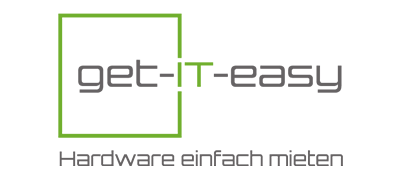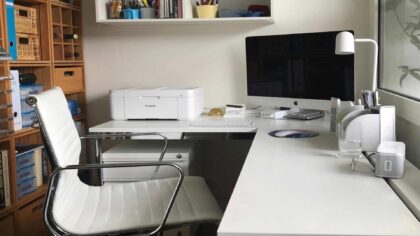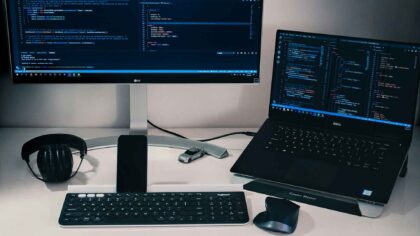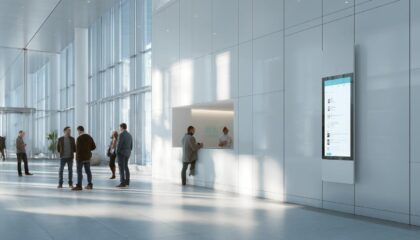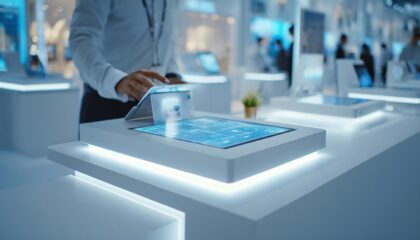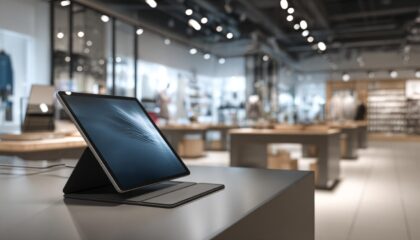Advisor
The advantages of hardware rental for healthcare facilities
Die Gesundheitsbranche ist ein Sektor, der ständig wächst und sich weiterentwickelt. Mit der kontinuierlichen Einführung neuer Technologien und der Verbesserung der bestehenden, ist es unerlässlich, dass Gesundheitseinrichtungen auf dem neuesten Stand bleiben, um eine optimale Patientenversorgung zu gewährleisten.
Die Anforderungen an die IT-Infrastruktur in Gesundheitseinrichtungen sind enorm. Sie müssen in der Lage sein, eine Vielzahl von Aufgaben zu bewältigen, von der Verwaltung von Patientendaten über die Unterstützung von medizinischen Geräten bis hin zur Bereitstellung von Telemedizin-Diensten. Dies erfordert eine robuste, zuverlässige und sichere Hardware. Darunter beispielsweise Tablets, Desktop-PCs oder Laptops. Auch das nötige Zubehör wie Ständer und Wandhalterungen sind relevant. Die Anschaffung dieser Hardware kann jedoch teuer sein, insbesondere für kleinere Einrichtungen oder solche mit begrenzten Ressourcen.
Deshalb wenden sich immer mehr Gesundheitseinrichtungen der Hardware-Miete zu. Durch die Hardware Miete können Einrichtungen auf dem neuesten Stand der Technik bleiben, ohne die hohen Anfangskosten für den Kauf von Geräten tragen zu müssen. Dies bietet eine Reihe von Vorteilen, die dazu beitragen, die Patientenversorgung zu optimieren.
Vorteile für die Gesundheitsbranche
1. Auf dem neusten Stand sein
Hardware-Technologie entwickelt sich schnell. Durch die Hardware Miete für Gesundheitseinrichtungen kann sichergestellt werden, dass sie immer Zugang zu den neuesten Geräten haben. Dies bedeutet, dass sie immer die effizientesten und effektivsten Tools zur Verfügung haben, um die Patientenversorgung zu verbessern.
Die Hardware Miete schützt vor dem Risiko, veraltete Technologie zu nutzen. Der Kauf von Geräten kann zu langfristigen Verpflichtungen führen, die eine Aktualisierung erschweren. Mit Mietmodellen können Gesundheitseinrichtungen sicherstellen, dass sie jederzeit Zugang zu modernsten Geräten haben, ohne sich mit dem Verkauf oder der Entsorgung veralteter Technologie befassen zu müssen.
2. Skalierbarkeit
Durch die Miete von Hardware können Gesundheitseinrichtungen ihre IT-Infrastruktur nach Bedarf skalieren. Wenn beispielsweise zusätzliche Geräte benötigt werden, können diese einfach hinzugefügt werden. Ebenso können Geräte, die nicht mehr benötigt werden, entfernt werden. Dies ermöglicht es Einrichtungen, flexibel auf Veränderungen in der Patientennachfrage oder auf neue Technologien zu reagieren. Die flexible Skalierbarkeit durch die Hardware-Miete ermöglicht eine effektive Ressourcennutzung. Einrichtungen können ihre IT-Infrastruktur genau auf den tatsächlichen Bedarf abstimmen. Das Hinzufügen oder Entfernen von Geräten erfolgt nahtlos, wodurch Platz und Energie effizient genutzt werden. Diese Anpassungsfähigkeit fördert nicht nur eine nachhaltigere Betriebsweise, sondern auch eine kosteneffiziente Nutzung von Ressourcen.
3. Nachhaltigkeit
Die Miete von Hardware kann dazu beitragen, den ökologischen Fußabdruck einer Gesundheitseinrichtung zu verringern. Anstatt alte Geräte zu entsorgen, wenn sie ersetzt werden, können sie an den Vermieter zurückgegeben werden, der sie dann entweder weitervermieten oder auf umweltfreundliche Weise entsorgen kann. Die Elektronikindustrie trägt erheblich zur Entstehung von Elektronikschrott bei, der oft schwer abbaubare Materialien enthält. Durch die Miete und Rückgabe von Geräten wird dieser Elektronikschrott minimiert. Dies ist besonders wichtig, da viele elektronische Geräte potenziell schädliche Substanzen enthalten, die bei unsachgemäßer Entsorgung Umweltauswirkungen haben können.
4. Risikominimierung
Unerwartete Probleme wie Geräteausfälle oder plötzliche technologische Veränderungen erfordern schnelle Lösungen. Durch die Miete sind Gesundheitseinrichtungen in der Lage, Geräte bei Bedarf rasch anzupassen oder auszutauschen. Dies minimiert Ausfallzeiten, stellt eine kontinuierliche Patientenversorgung sicher und verhindert finanzielle Verluste, die mit längeren Reparaturzeiten oder dem Erwerb neuer Geräte verbunden sein könnten. Durch die rasche Anpassung an technologische Veränderungen und die Minimierung von Ausfallzeiten tragen gemietete Geräte dazu bei, die Effizienz der Gesundheitseinrichtung zu steigern. Ein kontinuierlicher Betrieb ohne längere Unterbrechungen fördert die Effektivität der Patientenversorgung und trägt dazu bei, dass die Einrichtung ihre Ziele erreicht.
5. Budgetplanung und Transparenz
Die Vorteile der Hardware Miete erstrecken sich über eine transparente Budgetplanung hinaus, indem sie Gesundheitseinrichtungen eine umfassende finanzielle Sicherheit bietet. Durch die klare Kostenstruktur können nicht nur die Mietkosten präzise kalkuliert werden, sondern auch weitere finanzielle Aspekte berücksichtigt werden.
Die vorhersehbaren Mietkosten ermöglichen eine langfristige finanzielle Planung und Investition in die Patientenversorgung. Gesundheitseinrichtungen haben die Gewissheit, dass ihre Budgets durch unerwartete Ausgaben für Wartung, Reparaturen oder Ersatzteile nicht belastet werden. Dies schafft eine stabile wirtschaftliche Grundlage, auf der langfristige strategische Entscheidungen getroffen werden können.
Die klaren Kostenstrukturen der Hardware Miete für Gesundheitseinrichtungen ermöglicht eine erhöhte finanzielle Flexibilität. Budgets können gezielt auf andere Bereiche der Patientenversorgung umgeleitet werden, da keine unvorhersehbaren Ausgaben für den Betrieb und die Instandhaltung von Hardware anfallen. Dies ermöglicht eine effiziente Ressourcenallokation für Projekte, Schulungen oder innovative Technologien, die den Patientennutzen maximieren.
Fazit
Zusammenfassend lässt sich sagen, dass die Hardware-Miete für Gesundheitseinrichtungen eine effektive Möglichkeit bietet, die IT-Infrastruktur auf dem neuesten Stand zu halten, die Kosten zu kontrollieren und die Patientenversorgung zu optimieren. Während der Kauf von Hardware weiterhin eine Option für einige Einrichtungen sein mag, bietet die Miete eine flexible, kosteneffiziente und sichere Alternative, die es wert ist, in Betracht gezogen zu werden.
Read more - You may also be interested in
Would you like to delve deeper into the topic or discover similar content? Below, we have compiled three additional articles for you that are thematically related to this article. These may also be relevant and interesting for your company.
